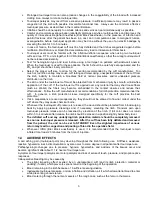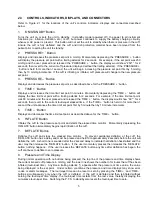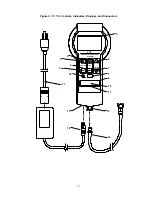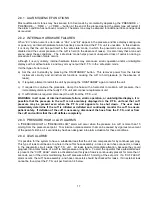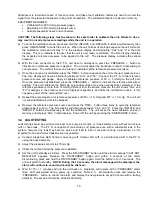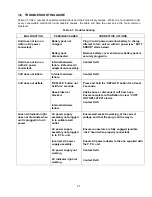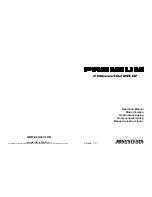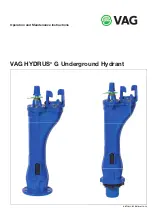
17
2.8.1 ALARM SILENCE FUNCTIONS
Most audible alarm tones may be silenced for 30 seconds by momentarily depressing the ‘PRESSURE + ‘,
‘PRESSURE – ‘, ‘TIME + ‘, or ‘TIME – ‘ button. At the end of the silenced period, the alarm tone will restart if
the alarm condition has not been corrected. The alarm tone may be silenced for additional 30 second periods
as required.
2.8.2 INTERNAL HARDWARE FAILURES
When “Err” and a numeric error code or “CAL” and “Err” appear in the pressure and time displays during use
or power-up, an internal hardware failure has likely occurred and the P.T.S. unit is unusable. In this situation,
it is likely that the unit has put itself in the ‘safe state’ mode, in which the pneumatic valve and pump are
disabled and the current pressure in the cuff is held (in the absence of leaks). It is also likely that a tone will
sound under these conditions. The ‘safe state’ mode helps prevent unexpected loss of occlusion during a
procedure if a sudden failure occurs.
Although it is very unlikely, internal hardware failures may also cause erratic operation and/or unintelligible
displays with or without alarms, and may or may not put the P.T.S. in the ‘safe state’ mode.
If either type of error occurs:
a) Set the unit to standby by pressing the ‘ON/STANDBY’ button. This removes power from the internal
instrument circuitry and all instrument functions, causing the cuff to hold pressure (in the absence of
leaks).
b) If required, attempt to restart the unit by pressing the ‘ON/STANDBY’ again to restart the unit.
c) If required to continue the procedure, clamp the hose with a hemostat to maintain cuff pressure, then
immediately disconnect the faulty P.T.S. unit and connect a replacement unit.
d) If cuff deflation is required, disconnect the cuff from the P.T.S. unit.
WARNING: In all cases of internal hardware failure, erratic operation, or unintelligible displays, it is
possible that the pressure in the cuff is not accurately displayed on the P.T.S. unit and that cuff
pressure may be present even when the P.T.S. unit appears to be shut down. The user must
immediately determine if the cuff is inflated or deflated and continually monitor the cuff to ensure
patient safety. If deflation of the cuff is necessary, disconnect the hose from the P.T.S. unit or from
the cuff and confirm that the cuff deflates completely.
2.8.3 PRESSURE HIGH or LOW ALARMS
A "PRESSURE HIGH" or "PRESSURE LOW" alarm will occur when the pressure in a cuff is more than 15
mmHg from the pressure set point. To minimize nuisance alarms that can be caused by vigorous movement
of the patient's limbs, a 1 second delay has been designed into alarm actuation for these conditions.
2.8.4 LEAK ALARMS
It is possible for the system to have a substantial leak that the unit can compensate for by continual pumping.
This type of leak could be due to a hole in the cuff or hose assembly, a loose or worn hose connector, or leaks
in the pneumatic circuit inside the P.T.S. unit. All leaks require immediate attention, because they could
progress into a total failure of a cuff to hold pressure at any time. To alert the operator that a substantial leak
is present, the “CUFF LEAK” alarm is activated when this type of leak is continuously present for more than 7
seconds, even if the unit is maintaining the cuff pressure within 15 mmHg of the set point. If a “CUFF LEAK”
alarm occurs, the cuff, hose assembly, and hose connectors should be checked for leaks. If an external leak
cannot be found, test the P.T.S. unit per Section 3.4 below.

